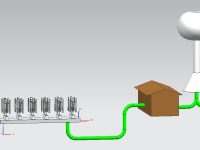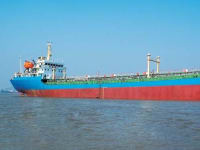Water, water everywhere, but not a drop to drink. If you live in drought stricken California, that old saying may ring true. With over 1000 miles of coast California has plenty of that salted variety, but fresh water resources have been taxed to the limit.
One solution that several coastal communities have leveraged is desalination by reverse-osmosis method. This technique has shown to be a reliable tool for providing safe drinking water. The down-side is the cost, especially the cost of electricity to operate the high pressure pumps. Electricity accounts for around 40 percent of the 10 year operating cost with includes equipment, labor, and consumables.
Dutch Treat may be a play on words, but represents the innovative solutions the Dutch people developed many years ago for moving water and treatment of water to make it useful.
I am proposing a variation on the use of wind turbines to pump water at pressures high enough for reverse-osmosis desalination.
Whilst most modern wind turbines are uses to generate electricity, the mechanical torque generated from wind power could certainly be used directly to operate pumps. The movement of water at pressure is the only requirement for operation. Converting it to electricity at the turbine would only add efficiency losses to the system.
System Details and Description of Operation.
1. The wind turbine converts wind energy into mechanical power (torque). I am an advocate for Vertical Axis Wind Turbines (VAWTs) for a number of reasons. Fist, they have a low center of gravity due to the mechanical take-off being low, making maintenance much easier. Second, they can be placed in an array such that many more turbines can be placed in a given space and have been shown to actually produce higher outputs by utilizing the wake sheds from one turbine to the next. This increases their power density for use in off-shore or near shore operation. Lastly, they are much less sensitive to changes in wind direction and may be more efficient than more typical horizontal axis machines where wind resources are not as ideal.
2. Pumps pressurize and transfer water to shore. With the boom in the oil and fracking industries, pumps and piping are well understood and widely available. Naturally, since only salt water is being pumped, there is no environmental issues should a leak happen.
3. A conventional reverse-osmosis filtration processes the salt water to fresh. No need for high pressure pumps or high electric costs to operate. Pre-filtration in the form of sand filters, could be sited at the turbine or at the onshore site. A large gas pressure accumulator could be used for reduce pressure spikes in the system. Some post filtration energy harvesting of pressurized brine can increase efficiency.
4. Fresh water is raised to local water reservoir, ready for drinking
An alternate system might be a desalinization ship, where all filtration and storage is accomplished on-board, ready to deliver to parched communities
Like this entry?
-
About the Entrant
- Name:Richard Topf
- Type of entry:individual
- Patent status:none








